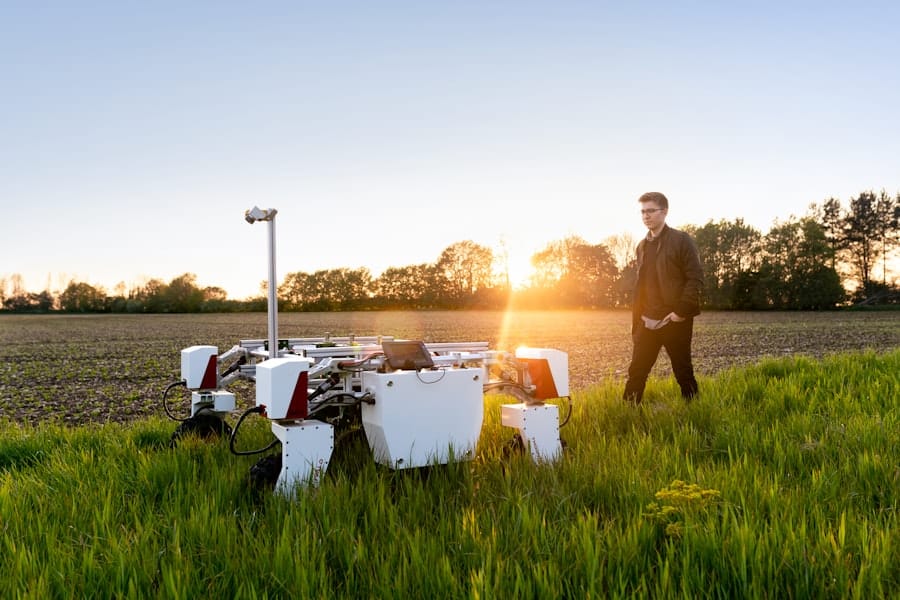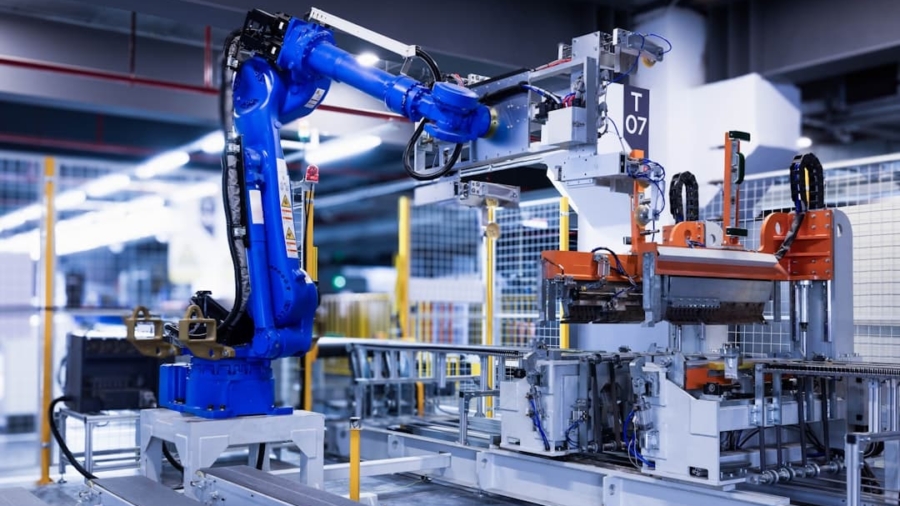The field of robotics has witnessed remarkable advancements over the past few decades, driven by innovations in artificial intelligence, materials science, and sensor technology. These developments have not only enhanced the capabilities of robots but have also expanded their applications across various sectors, including healthcare, manufacturing, and service industries. In particular, the integration of machine learning algorithms has enabled robots to learn from their environments and improve their performance over time.
This adaptability is crucial in applications where precision and responsiveness are paramount, such as in surgical robots or robotic prosthetics. Moreover, advancements in materials technology have led to the creation of lighter, stronger, and more flexible components that can be used in robotic systems. For instance, the development of soft robotics has introduced new possibilities for creating devices that can interact safely and effectively with humans.
These soft robots are often made from materials that mimic biological tissues, allowing for more natural movements and interactions. As a result, the robotics industry is not only focused on enhancing mechanical capabilities but also on creating systems that can seamlessly integrate into human environments, thereby improving user experience and safety.
Key Takeaways
- Robotics technology has advanced significantly, leading to improved prosthetic design and functionality.
- Robotics has had a significant impact on prosthetic design, allowing for more natural and efficient movement.
- Robotics plays a crucial role in enhancing the functionality of prosthetics, allowing for greater precision and control.
- Customizing prosthetics for individuals is made possible through the use of robotics, leading to better fit and improved comfort.
- The integration of robotics in prosthetic control systems has revolutionized the way individuals interact with their prosthetics, allowing for more intuitive and natural movement.
The Impact of Robotics in Prosthetic Design
Robotics has fundamentally transformed the design of prosthetic limbs, moving away from traditional static models to dynamic systems that closely mimic natural movement. The incorporation of robotics into prosthetic design has enabled the development of bionic limbs that can respond to neural signals from the user’s residual limb. This is achieved through advanced sensors and actuators that interpret muscle signals and translate them into movement, allowing for a more intuitive control mechanism.
For example, prosthetic hands equipped with robotic fingers can grasp objects with varying degrees of pressure, providing users with a sense of touch and control that was previously unattainable.
With the ability to create tailored prosthetics based on individual anatomical measurements, 3D printing allows for a level of personalization that enhances comfort and functionality.
This technology not only reduces production costs but also shortens the time required to produce a prosthetic limb. As a result, patients can receive their custom prosthetics more quickly, which is particularly beneficial for children whose limbs are still growing and require frequent adjustments.
The Role of Robotics in Enhancing Prosthetic Functionality

The functionality of prosthetics has significantly improved due to the integration of robotics, enabling users to perform a wider range of activities with greater ease. Advanced robotic prosthetics are equipped with sophisticated control systems that allow for multi-degree-of-freedom movements. This means that users can perform complex tasks such as typing on a keyboard or playing musical instruments with a level of dexterity that was once thought impossible.
For instance, some modern prosthetic hands feature individual finger control, allowing users to manipulate objects with precision. Moreover, robotics has facilitated the development of powered prosthetics that can assist users in walking or running. These devices often incorporate motors and sensors that adjust to the user’s gait in real-time, providing support where needed.
Research has shown that powered exoskeletons can significantly improve mobility for individuals with lower limb amputations or paralysis, enabling them to navigate various terrains and engage in physical activities that enhance their quality of life. The continuous evolution of robotic technology promises even greater enhancements in functionality, making it possible for users to regain independence and engage more fully in daily activities.
The Importance of Robotics in Customizing Prosthetics for Individuals
Customization is a critical aspect of prosthetic design, as each individual has unique anatomical and functional needs. Robotics plays a pivotal role in this process by enabling the creation of highly personalized devices that cater to specific requirements. Advanced imaging techniques such as MRI and CT scans allow for precise mapping of an individual’s residual limb, which can then be used to design a prosthetic that fits perfectly.
This level of customization not only improves comfort but also enhances the overall effectiveness of the prosthetic. Furthermore, robotics facilitates ongoing adjustments and modifications to prosthetics as users’ needs change over time. For example, individuals may experience changes in their residual limb due to weight fluctuations or other health factors.
Robotic systems equipped with adaptive algorithms can learn from these changes and adjust their performance accordingly. This adaptability ensures that users maintain optimal functionality throughout their lives, reducing the need for frequent replacements or extensive modifications.
The Integration of Robotics in Prosthetic Control Systems
The control systems used in modern prosthetics have evolved dramatically due to advancements in robotics. Traditional prosthetics often relied on passive mechanisms that provided limited functionality; however, contemporary designs utilize sophisticated control algorithms that enable active movement based on user intent.
By interpreting these signals, robotic prosthetics can execute precise movements that align with the user’s intentions. In addition to myoelectric control, some prosthetics are now being developed with brain-computer interface (BCI) technology. BCIs allow users to control their prosthetics directly through neural signals, bypassing the need for muscle contractions altogether.
This groundbreaking approach opens up new possibilities for individuals with high-level amputations or neurological conditions affecting muscle control. As research continues to advance in this area, we may see even more intuitive control systems that enhance the user experience and expand the capabilities of robotic prosthetics.
The Future of Robotics in Prosthetics

Looking ahead, the future of robotics in prosthetics is poised for transformative changes driven by ongoing research and technological advancements. One promising area is the integration of artificial intelligence (AI) into prosthetic systems. AI algorithms can analyze vast amounts of data from user interactions to optimize performance and predict user needs.
This could lead to prosthetics that not only respond to immediate commands but also anticipate actions based on learned behaviors, creating a more seamless interaction between user and device. Moreover, advancements in soft robotics may lead to even more lifelike prosthetics that closely mimic human anatomy and movement patterns. Researchers are exploring materials that can change stiffness or shape in response to external stimuli, allowing for more natural movements and interactions with the environment.
As these technologies mature, we may witness a new generation of prosthetics that not only restore function but also enhance the overall quality of life for users by providing them with devices that feel more like an extension of their own bodies.
The Benefits of Robotics in Prosthetic Rehabilitation
Robotics has also made significant contributions to the rehabilitation process for individuals using prosthetics. Robotic-assisted rehabilitation devices can provide targeted therapy that helps users regain strength and coordination after amputation or injury. These devices often incorporate feedback mechanisms that allow users to receive real-time information about their movements, helping them refine their techniques and improve their overall performance.
Additionally, robotic rehabilitation systems can be tailored to meet individual needs, offering personalized training programs that adapt as users progress. For instance, some rehabilitation robots are designed to simulate real-world tasks, allowing users to practice activities they will encounter in daily life. This practical approach not only enhances physical recovery but also boosts confidence as individuals learn to navigate their environments with greater ease.
The Ethical and Social Implications of Robotics in Prosthetics
As robotics continues to reshape the landscape of prosthetic design and functionality, it also raises important ethical and social considerations. One significant concern is accessibility; while advanced robotic prosthetics offer incredible benefits, they can also be prohibitively expensive. Ensuring equitable access to these technologies is crucial for promoting inclusivity and preventing disparities among individuals who require prosthetic devices.
Moreover, there are ethical questions surrounding autonomy and identity when it comes to robotic enhancements. As individuals increasingly rely on advanced technologies to augment their physical capabilities, society must grapple with what it means to be human in an age where machines play an integral role in our lives. Discussions around these topics are essential for guiding future developments in robotics and ensuring that innovations serve the best interests of all individuals involved.
In conclusion, the advancements in robotics technology have profoundly impacted the field of prosthetics, enhancing design, functionality, customization, control systems, rehabilitation processes, and raising important ethical considerations. As we look toward the future, it is clear that robotics will continue to play a pivotal role in shaping the experiences of individuals who rely on prosthetic devices, ultimately leading to improved quality of life and greater independence.
In the discussion of modern prosthetics, the integration of robotics plays a crucial role in enhancing mobility and functionality for users. For a deeper understanding of how technology is shaping our daily lives, you might find the article on exploring the features of the Samsung Galaxy Chromebook 2 particularly interesting, as it highlights the advancements in technology that can also benefit the field of prosthetics.
FAQs
What are robotics in modern prosthetics?
Robotics in modern prosthetics refer to the use of advanced technology and mechanical systems to create artificial limbs and body parts that can mimic the function of natural limbs.
How do robotics improve prosthetics?
Robotics improve prosthetics by providing more natural movement, better control, and increased functionality for the user. This can greatly enhance the quality of life for amputees and individuals with limb differences.
What are the essential benefits of robotics in modern prosthetics?
The essential benefits of robotics in modern prosthetics include improved mobility, enhanced dexterity, better comfort, and increased independence for individuals with limb loss or limb differences.
How do robotics contribute to the advancement of prosthetic technology?
Robotics contribute to the advancement of prosthetic technology by enabling the development of more sophisticated and responsive prosthetic devices that closely resemble the function of natural limbs.
What role do robotics play in the future of prosthetics?
In the future, robotics are expected to play a crucial role in further enhancing the capabilities of prosthetic devices, leading to even greater levels of functionality, comfort, and integration with the human body.

